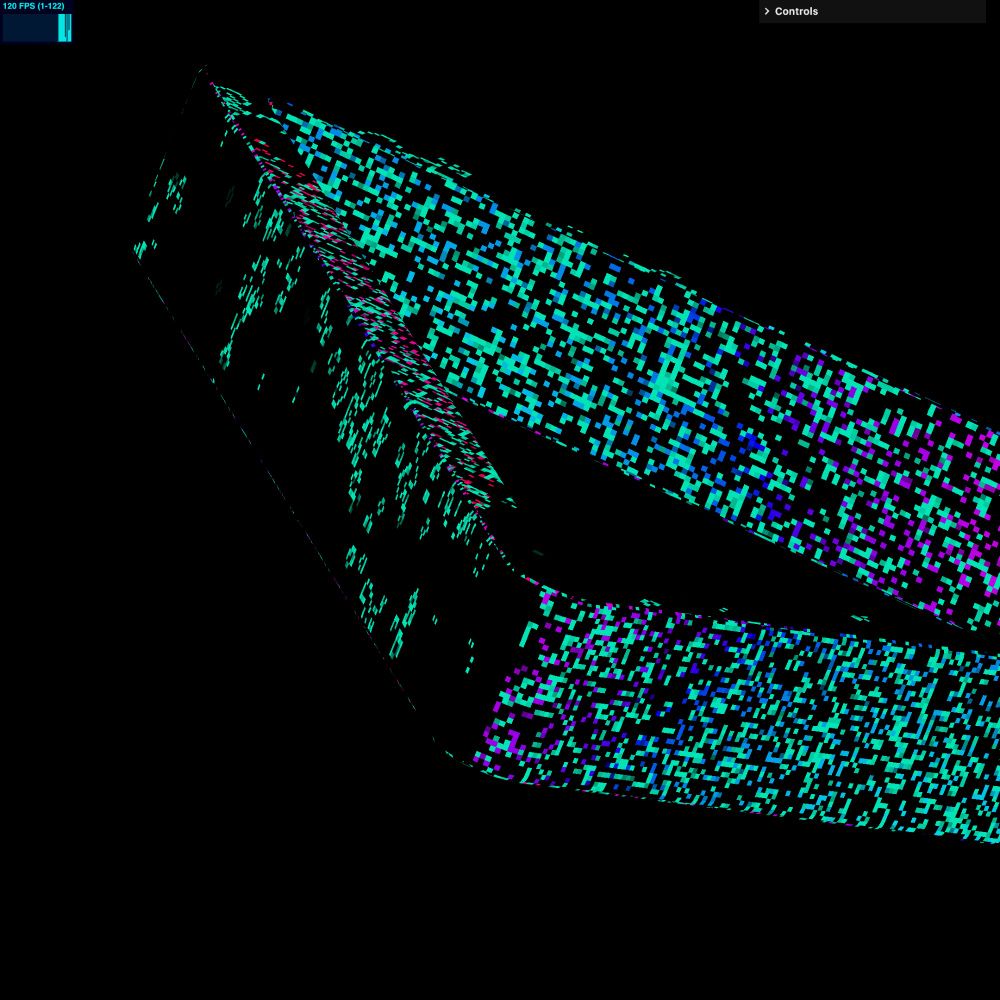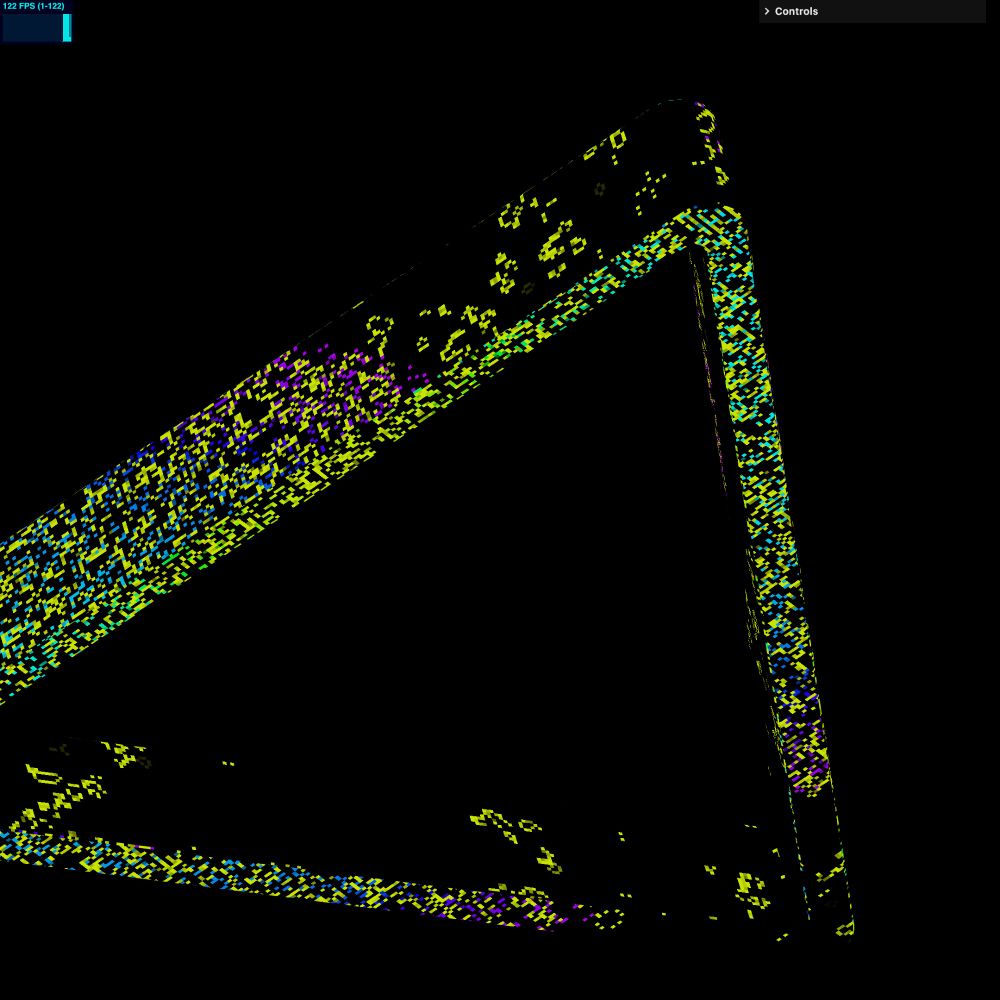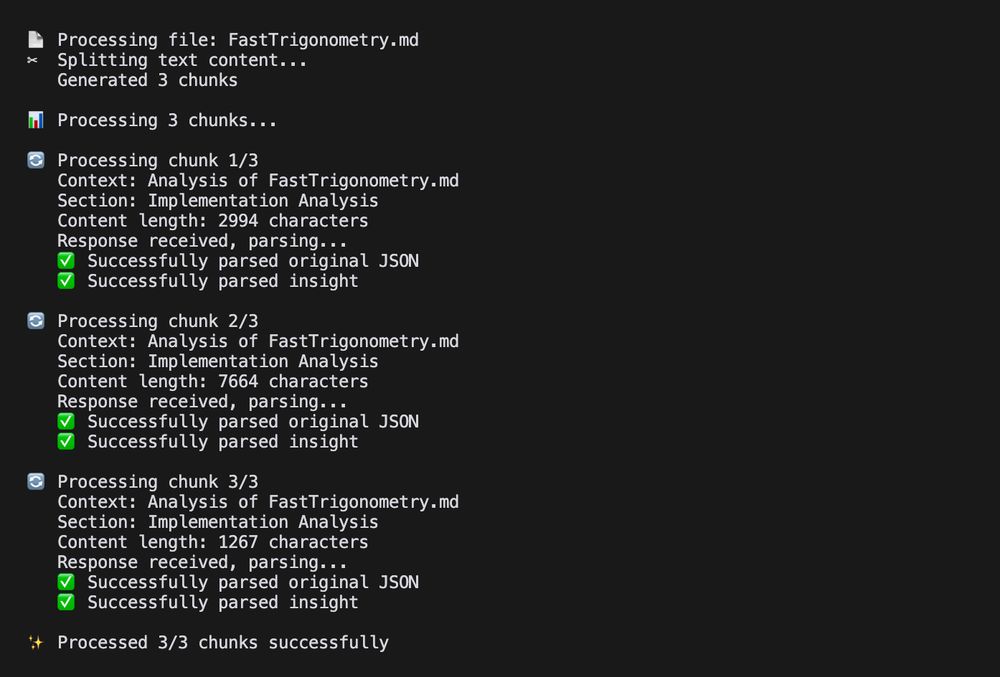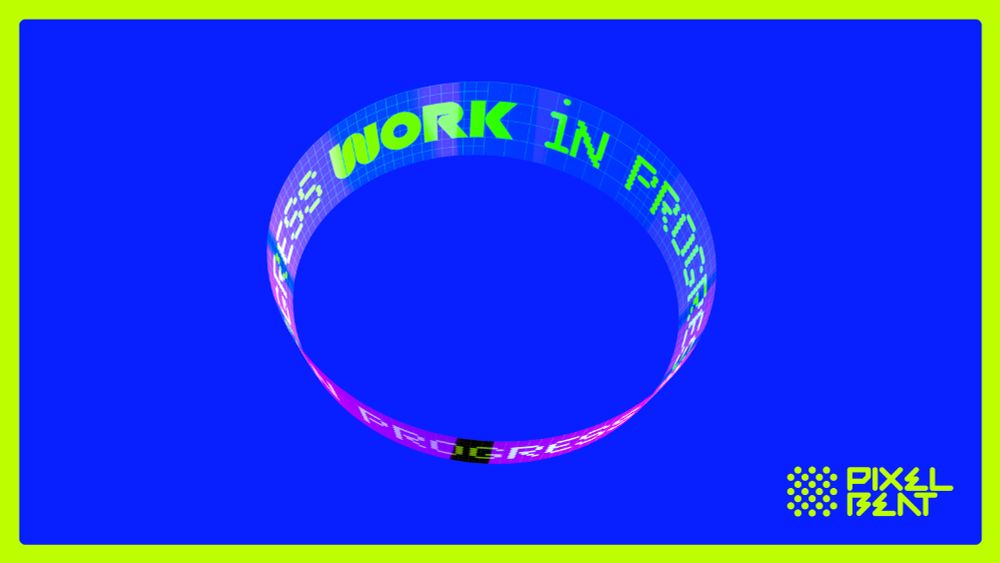This is one of the easiest ways to get something cool running using the most simple Three.js code template.
This is one of the easiest ways to get something cool running using the most simple Three.js code template.
Cube maps in high-res, w/ an AFR method. Runs at 60-80fps, super unoptimized.
Thanks @mrdoob.com and all the contributors of #threejs for 15 years of open source development.
Cube maps in high-res, w/ an AFR method. Runs at 60-80fps, super unoptimized.
Thanks @mrdoob.com and all the contributors of #threejs for 15 years of open source development.
Instead of fully giving up, I decided to exacerbate the aberration, and I think it kinda works.



Instead of fully giving up, I decided to exacerbate the aberration, and I think it kinda works.
I tried to do it manually, I really did... but I found myself really out of my depth.
And then I found that someone ported xAtlas for Three.js
github.com/repalash/xat...




I tried to do it manually, I really did... but I found myself really out of my depth.
And then I found that someone ported xAtlas for Three.js
github.com/repalash/xat...
Not perfect, but it such a final boss for me, of everything that I think I understood about WebGL, but I really didn't. #threejs
Not perfect, but it such a final boss for me, of everything that I think I understood about WebGL, but I really didn't. #threejs



If I enable DVR mode I get an HD capture recorded on the cloud.


If I enable DVR mode I get an HD capture recorded on the cloud.
There are no shortcuts for making something performant, flexible and dope. I literally built and iterated exploring every possible way to build this component.
It has a Hamiltonian Path of trade-offs.
And I think I found the way.
There are no shortcuts for making something performant, flexible and dope. I literally built and iterated exploring every possible way to build this component.
It has a Hamiltonian Path of trade-offs.
And I think I found the way.
Instead of setting custom parameters per image, you can tell Python to create a range of combinable configurations and let it work its magic.




Instead of setting custom parameters per image, you can tell Python to create a range of combinable configurations and let it work its magic.
But I’m looking for a more generalized solution that allows me to truly control bounded/mapped interpolations between open planar meshes to close ring meshes.
But I’m looking for a more generalized solution that allows me to truly control bounded/mapped interpolations between open planar meshes to close ring meshes.
The solution seems to be emerging by intuitively combining bones with conformal mapping equations.
5 bucks to Cauchy–Riemann.
The solution seems to be emerging by intuitively combining bones with conformal mapping equations.
5 bucks to Cauchy–Riemann.
- Auto Layout features based on the Cassowary Constraint Solving algo.
- Custom easing curves.
- Uses FTrig for Fast Trigonometry fns.
- Comes with a Transitionable operator to handle transitions between layout mutations
- Auto Layout features based on the Cassowary Constraint Solving algo.
- Custom easing curves.
- Uses FTrig for Fast Trigonometry fns.
- Comes with a Transitionable operator to handle transitions between layout mutations



Turns out I use sin/cos pretty much on every project that has anything related to motion, from p5.js & d3.js to three.js.
The Taylor Series, plus other polynomial approximations, can calculate trig functions at 2x, 3x fast than Math.sin() & Math.cos()


Turns out I use sin/cos pretty much on every project that has anything related to motion, from p5.js & d3.js to three.js.
The Taylor Series, plus other polynomial approximations, can calculate trig functions at 2x, 3x fast than Math.sin() & Math.cos()
Almost done with testing & benchmarks.
This was such a fun project, now I need to write a bit of documentation and stress testing it.

Almost done with testing & benchmarks.
This was such a fun project, now I need to write a bit of documentation and stress testing it.
- I'm learning how to use test driven development in my workflows(helps me understand if I'm understanding the problem/solution space).
- Learning how to create self-optimizing prompts (helps me avoid wasting time & tokens)

- I'm learning how to use test driven development in my workflows(helps me understand if I'm understanding the problem/solution space).
- Learning how to create self-optimizing prompts (helps me avoid wasting time & tokens)


I’m not gonna add any complex stuff like shape functions, or boundaries…
But the “framework” of thinking about breaking a global domain (plane, ring) into smaller local domains (2 planes, 2 half-rings), what is call “discretization”, feels like 🫡



I’m not gonna add any complex stuff like shape functions, or boundaries…
But the “framework” of thinking about breaking a global domain (plane, ring) into smaller local domains (2 planes, 2 half-rings), what is call “discretization”, feels like 🫡









